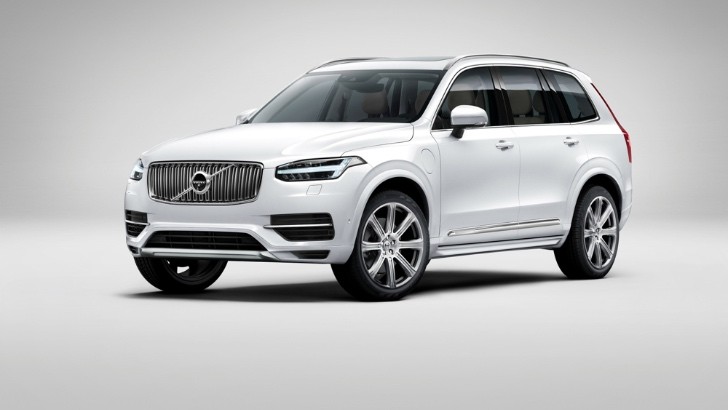Last year, Volvo claimed the T8 Twin Engine on the new XC90 gives the car's a new status in its class: the cleanest SUV in the world. As ambitious as that might sound, Volvo managed to improve those claims.
Besides putting their money where their mouth was, Volvo did more than originally claimed for the XC90 T8. If you remember, the Swedish carmaker announced in December 2014 that its T8 Twin Engine technology makes the XC90 wake up every morning asking itself "Mirror, mirror on the wall, who's the cleanest SUV in the world?".
We are obliged to talk numbers here, as in-house testing sessions carried out by Volvo initially revealed the hybrid powertrain will only return 59 grams of CO2 per kilometer.
Hence, there's no wonder the SUV can sprint from 0 to 100 km/h (62 mph) in 5.9 seconds. But Volvo didn't have the final word on the powertrain performances up until now. The Swedes claim the earlier announced emissions figure is not valid anymore, as the T8 Twin Engine is in fact returning 49 grams of CO2 per kilometer. In addition, average fuel consumption is announced at 2.1 l/100 km, which translates into 134.5 mpg UK and 112 mpg US.
If this will be achievable in real-life conditions or at least nearly-achievable, Volvo will have even more reasons to brag in front of other carmakers. For example, the Volvo XC90 T8 Twin-Engine SUV can go for 43 km (26 miles) solely on electric power, a performance not a single competitor in its class can replicate or beat.
As you know, the XC90 is based on Volvo's SPA (Scalable Platform Architecture) making use of newly developed Drive-E engines. The Swedish SUV's main competitor at the moment is the Audi Q7 e-tron quattro, which manages to return 50 grams of CO2 per kilometer and 138 mpg US 166 mpg UK.
We are obliged to talk numbers here, as in-house testing sessions carried out by Volvo initially revealed the hybrid powertrain will only return 59 grams of CO2 per kilometer.
The powertrain
Bear in mind that the Volvo XC90 T8 has 400 HP in its belly, assisted by a maximum torque of 640 Nm (472 lb-ft). These figures are provided by a 318 HP, 400 Nm (295 lb-ft) Drive-E petrol mill working together with an 82 HP, 240 Nm (117 lb-ft) electric motor placed on the rear axle, tasked with spinning the back wheels.Hence, there's no wonder the SUV can sprint from 0 to 100 km/h (62 mph) in 5.9 seconds. But Volvo didn't have the final word on the powertrain performances up until now. The Swedes claim the earlier announced emissions figure is not valid anymore, as the T8 Twin Engine is in fact returning 49 grams of CO2 per kilometer. In addition, average fuel consumption is announced at 2.1 l/100 km, which translates into 134.5 mpg UK and 112 mpg US.
If this will be achievable in real-life conditions or at least nearly-achievable, Volvo will have even more reasons to brag in front of other carmakers. For example, the Volvo XC90 T8 Twin-Engine SUV can go for 43 km (26 miles) solely on electric power, a performance not a single competitor in its class can replicate or beat.
How was that possible?
“We have been working hard to earn our competitive edge and to give our customers the ultimate combination of performance and low fuel consumption. Our Twin Engine technology has enabled us to build on our heritage of efficient powertrain development in a completely new way. Thanks to our new scalable product architecture, and our world class four-cylinder engines, we have a clear and leading position,” said Dr. Peter Mertens, Senior Vice President Research & Development at Volvo Car Group.As you know, the XC90 is based on Volvo's SPA (Scalable Platform Architecture) making use of newly developed Drive-E engines. The Swedish SUV's main competitor at the moment is the Audi Q7 e-tron quattro, which manages to return 50 grams of CO2 per kilometer and 138 mpg US 166 mpg UK.
